A few tattoos from the Movie Fight Club
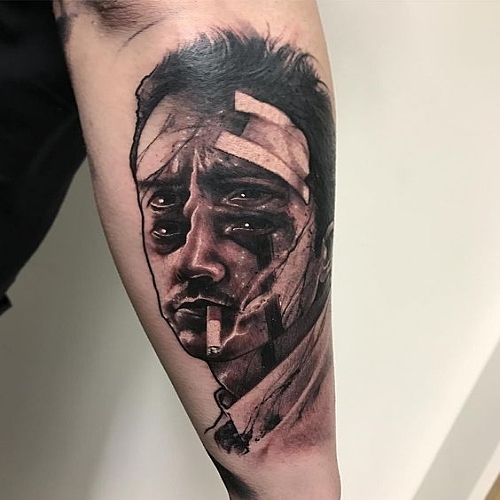
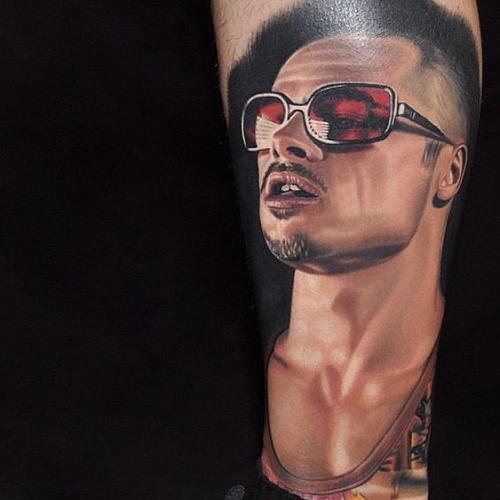
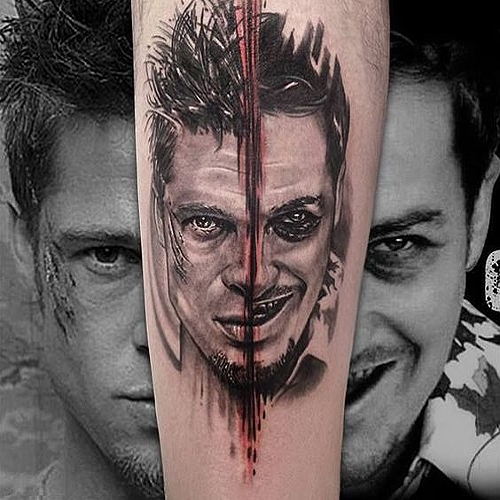
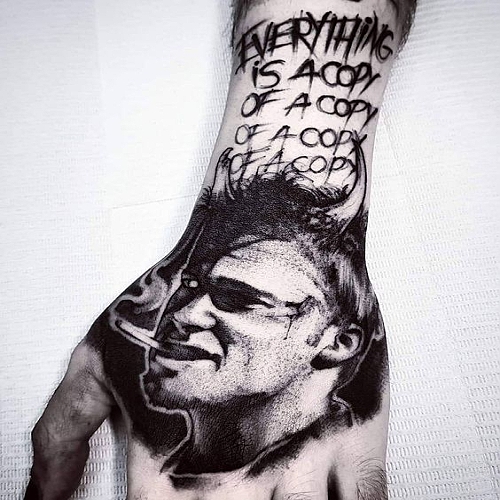
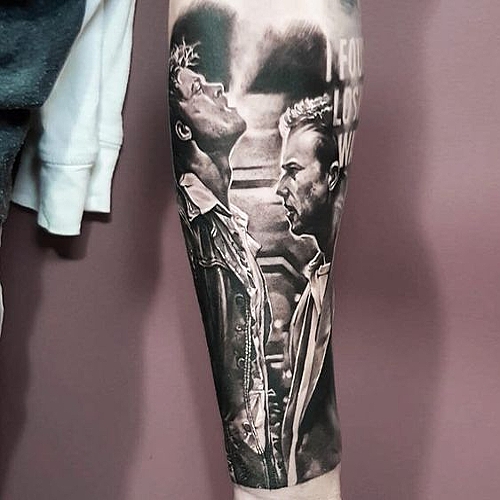
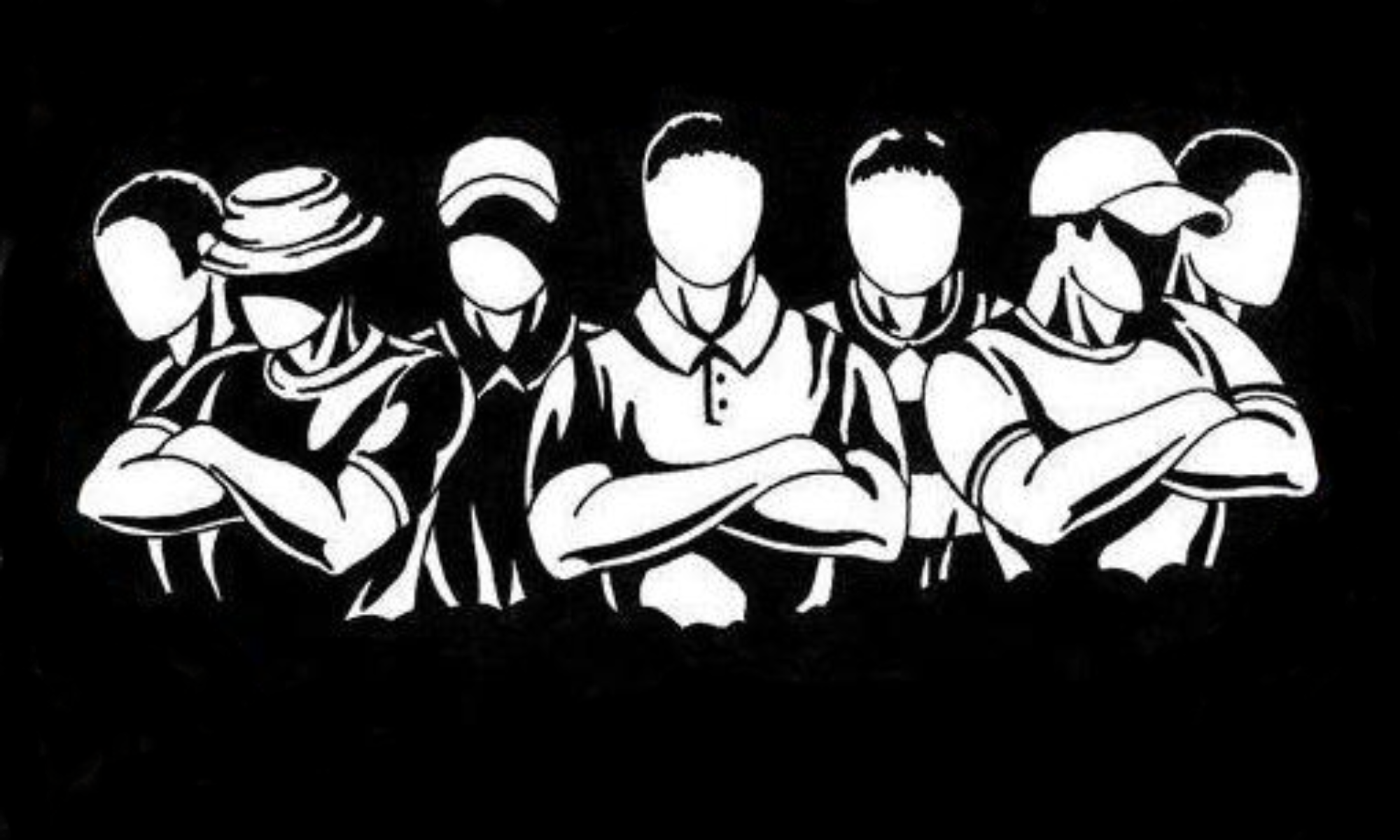
A website for the lads
These are the stories behind the real men and women whose lives were depicted in the movie Goodfellas.
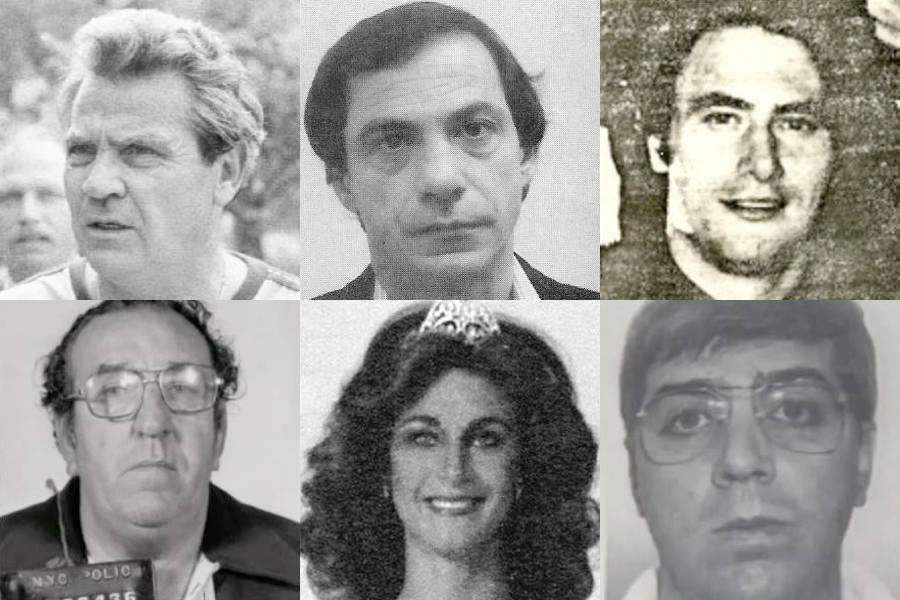
Few would deny that Goodfellas has become a classic, and Martin Scorsese, in making it, arguably produced the ultimate gangster picture and set the bar pretty high. But Goodfellas is so much more than just a mob movie. It is also one of the best satires of the American dream, a rise-and-fall movie, a tragedy, and a comedy.
One of the aspects of Martin Scorsese’s Goodfellas that has elevated the film to the classic status it holds today is the intense realism of its depictions of the life in the Mafia. This realism largely stems from the fact that, unlike films such as The Godfather and Once Upon A Time In America, Goodfellas is based on a true story of one gangster, his associates, and one of the most daring heists in American history.
The story comes courtesy of the 1986 nonfiction bestseller Wiseguy that detailed the life of Lucchese crime family associate Henry Hill, as well as his comrades like James “Jimmy The Gent” Burke and Thomas DeSimone, and their involvement in the infamous Lufthansa heist.
This was, at the time, the largest robbery ever committed on U.S. soil. Eleven mobsters, mainly associates of the Lucchese crime family, stole $5.875 million (more than $20 million today) in cash and jewels from a vault at New York’s John F. Kennedy International Airport.
Here are the true stories of the people who carried out this heist as well as countless other crimes that helped make Goodfellas the crime classic it is today.

Henry Hill, the central character in Goodfellas (played by Ray Liotta), was born in 1943 to an Irish-American father and a Sicilian-American mother in the Brownsville section of Brooklyn, New York.
It was a neighborhood filled with Mafiosos and Hill admired them all from a young age. At just 14, Hill dropped out of school to start working for Paul Vario, a capo in the Lucchese crime family, and thus became a member of the infamous Vario crew. Hill started out just picking up money from local rackets and bringing them to the boss, but his responsibilities quickly escalated.
He began to get involved in arson, assault, and credit card fraud. After returning from a short military stint in the early 1960s, Hill returned to a life of crime. Though his Irish blood meant that he could never be a made man, he nevertheless became a highly active associate of the Lucchese family.
Among Hill’s closest compatriots at this time was fellow Lucchese family associate and friend of Paul Vario, James Burke. After years of truck hijacking, arson, and other crimes (including extortion, for which he served time in the 1970s), Hill and Burke played major roles in orchestrating the Lufthansa heist in 1978.
At the same time, Hill was involved in a point-shaving racket with the 1978-79 Boston College basketball team and ran a major narcotics operation in which he sold marijuana, cocaine, heroin, and quaaludes wholesale.
It was the drugs that brought Hill’s downfall when he was arrested on trafficking charges in April 1980. Initially, he wouldn’t fold to police interrogators, but amid growing suspicions that some of his own associates were planning to kill him in fear that he might put them in legal trouble, Hill began to talk.
In fact, it was Hill’s testimony about the Lufthansa heist that brought the arrests of many of the other men involved — and became the basis for Wiseguy, and thus Goodfellas.
After testifying, Hill was placed in the Witness Protection Program but was kicked out of after repeatedly revealing his true identity to others. He was, nonetheless, never tracked down and killed by his former associates, but instead died of complications related to heart disease on June 12, 2012, the day after his 69th birthday.

James Burke, played by Robert De Niro as “Jimmy Conway” in the film, was the principal architect of the Lufthansa heist.
Soon after he was born — in 1931, to an Irish immigrant single mother in New York — Burke was placed into foster care and shifted from orphanages to foster homes and back throughout his childhood. He suffered sexual and physical abuse from these caretakers, with one of his foster fathers even dying in a car crash because he was reaching back to hit Burke. The man’s widow blamed Burke for the accident and beat him for it until the child was moved on to his next stop.
Like Henry Hill, Burke’s Irish-American heritage made it impossible for him to become a “made man,” but by the 1950s, he had become a major player in the South Ozone Park and East New York criminal underworld with Paul Vario’s crew, earning his nickname “Jimmy The Gent” for his practice of tipping the drivers of the trucks that he stole.
Despite his nickname, Burke was known for his extreme violence. In 1962, for example, his fiancée told him that she was being harassed by an ex-boyfriend. On the wedding day, the police found the remains of the man cut up in a dozen pieces in his own car.
Burke is also thought to be the one who ordered, and possibly carried out, the murders of most of the men involved in the Lufthansa heist.
Soon after, following Henry Hill’s testimony in 1982, Burke was sentenced to 20 years in federal prison for his involvement in the 1978–79 Boston College basketball point shaving scandal. While in prison, Burke was convicted of a previous murder he had committed and received another life sentence. He died in prison due to lung cancer in 1996.

Karen Hill — Henry’s wife, played by Lorraine Bracco in the film — was born Karen Friedman in New York City in 1946. Soon after her birth, her family moved to Long Island where she was raised in the Five Towns area.
She first met Henry through mutual friends while she was working at a dental office in New York. The pair’s first meeting — at the Villa Capra, a restaurant owned by notorious mobster “Frankie The Wop” — was a double date involving Paul Vario’s son, Paul Jr. (not Thomas DeSimone, as depicted in the film).
At first, Karen said that the date was disastrous and that Henry even stood her up on her second date, only further lowering her opinion of him. However, following a number of lavish dates after these initial fiascos, the two became a couple.
Karen and Henry eloped to North Carolina in 1965 when she was just 19, but eventually had a large Jewish ceremony back home to appease her parents. Soon after, they had two children, Gregg and Gina, and lived together with Karen’s parents before moving into their own place as Henry’s status rose within Vario’s crew.
But things turned sour when Henry went to prison on extortion charges in the 1970s. In his memoirs, Henry claims that, during this time, Karen was sleeping with Vario. When Henry faced prison again, on drug charges in 1980, he instead testified for the government, entered the Witness Protection Program, and took Karen and their kids along with him.
Eventually, however, Karen and Henry divorced in 1989, though it was not finalized until 2001.
Since then, she has remarried and lived under an alias due to the exposure from Wiseguy and Goodfellas.

Perhaps the most likable character in Goodfellas and unquestionably one of the most famous villains in film history is Tommy DeVito (played by Joe Pesci). In real life, he was known by the name Thomas DeSimone. Nicknamed “Two-Gun Tommy” or “Tommy D,”however, DeSimone was an imposing man who stood 6’2″ and weighed 225 pounds. DeSimone too stepped into the world of crime early in his life, joining Paul Vario’s crew in 1965, and according to Henry Hill, he committed his first murder two years later, when he was only 17 years old.however, His courage and determination were widely known in Mafia circles, but it was his short temper that would bring him a lot of trouble throughout his life. He was a “pure psychopath,” according to Henry Hill.

Joe Pesci portrayed Tommy DeVito (based on Thomas DeSimone) in “Goodfellas.”
Born in Cambridge, Massachusetts in 1950 to a deeply-rooted Mafia family, DeSimone soon after moved to New York City with his family.
DeSimone’s extended family included feared mobsters like a grandfather and an uncle who were both bosses of a Los Angeles crime family in the 1920s and 1950s, respectively. DeSimone also had two brothers that were associates of the powerful Gambino crime family in New York, one of which was murdered by the family for allegedly cooperating with authorities.
The weight of his brother’s reputation left DeSimone with something to prove, causing him to frequently lash out at others with violence. Finally, his sister, Phyllis, was a mistress of Jimmy Burke. Through this connection, Burke brought DeSimone on as a member of the Vario crew.
In the testimony used for the book Wiseguy, Henry Hill recalls that when he first met DeSimone, he was “a skinny kid who was wearing a wiseguy suit and a pencil mustache.” But at the age of 17, DeSimone committed his first murder. He shot a random pedestrian walking past him and Hill. He reportedly told Hill, “Hey, Henry, watch this.” before shooting the man in the head with a .38 pistol.
According to Hill, DeSimone relished the idea of killing people, his murderous tendencies aided by the fact that he was very often high on cocaine.
Perhaps DeSimone’s most brutal murder came in 1970, during a welcome home party for formerly imprisoned William “Billy Batts” Bentvena, a made man in the Gambino family. DeSimone became enraged over a snide comment that Bentvena made about DeSimone having once been a shoeshine boy. A couple of weeks later, because of the shoeshine comment as well as the fact that Burke had taken over Bentvena’s loan shark operation while the latter was in prison and didn’t want to relinquish it, Burke and DeSimone plotted to kill Bentvena.
Burke invited Bentvena to a bar owned by Hill for a night of drinking with the Vario crew. Burke got Bentvena drunk and then held him down while DeSimone beat him with a pistol. Thinking he was dead, Burke, Hill, and DeSimone placed him in the trunk of their car and drove away. After hearing sounds from the trunk, DeSimone and Burke realized that he was not yet dead, then beat and stabbed him to death before burying his body under a dog kennel.
Eight years later, during the Lufthansa heist, DeSimone acted as one of the key gunmen who collected the money. Then, following the robbery, he also carried out the killing of Parnell “Stacks” Edwards, a criminal associate that the thieves had hired to dispose of the truck used in the heist, but who had failed to do so.
DeSimone’s efforts were about to pay off in 1979 as he was told he was about to become a made man of the Lucchese Family. However, instead of becoming a made man, he got a bullet in the head after the Gambino family and Lucchese family decided to liquidate him because he had killed Billy Batts of the Gambino family, a made man.

At the head of the operation responsible for many of the crimes committed by Thomas DeSimone, Henry Hill, and James Burke was Paul Vario, renamed “Paul Cicero” and played by Paul Sorvino in Goodfellas.
With this crew and other associates, Vario gained control of most organized crime in the East New York neighborhood of Brooklyn, near what is now known as John F. Kennedy International Airport, a major source of income for Vario’s crew.
Vario would rob the airport, extort its employees, and use his union connections to block federal investigators. And when Jimmy Burke came to Vario with the plans for the Lufthansa heist at the airport, it was ultimately Vario who had to approve it.
Not merely a boss who approved criminal activities without getting his own hands dirty, Vario himself was known to be a violent man. When a waiter accidentally spilled wine on his wife at a restaurant, for example, Vario sent men with baseball bats to beat the restaurant’s staff later that night.
In the end, Vario was arrested based on Hill’s testimony that Vario had defrauded the government by creating a fictitious job that would ensure Hill’s release from prison. Vario died in prison of a heart attack in 1988.

William “Billy Batts” Bentvena was born in 1921 in New York City and was raised in the same part of east Brooklyn as Henry Hill. In Goodfellas, Bentvena is only referred to by his nickname and is played by Frank Vincent.
Like his compatriots in the neighborhood, Bentvena became involved in crime at a young age, and by 1951 he was an associate of the Gambino crime family.
Unlike Henry Hill, Bentvena was a full-blooded Italian-American, and as such was able to become a made man. He reached this rank in 1961 and began carrying out hits as a street soldier with infamous mobster John Gotti.
He was arrested in Bridgeport, Connecticut in 1964 while conducting a drug deal for the Gambino family and was sentenced to six years in prison. While Bentvena was in prison, Burke took over his loanshark operation.
Upon Bentvena’s release, Burke and DeSimone murdered him rather than give back the loanshark operation.
Content retrieved from: https://offtheclothboff.com/category/outlaws-gangsters-robbers/mobsters/.
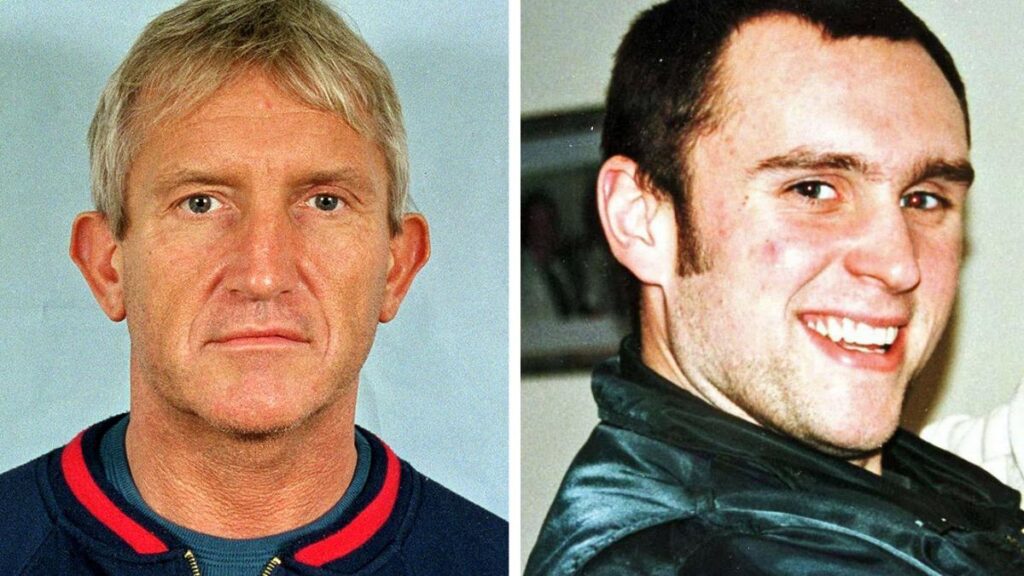
Kenneth James Noye (born 24 May 1947) is an English criminal who was sentenced to life imprisonment for murdering Stephen Cameron in a road rage incident while on licence from prison in 1996. He was arrested in Spain two years later and convicted of the crime four years after it occurred.
A former police informant, Noye was acquitted in 1985 for the murder of a police officer on the grounds of his home, and was convicted in 1986 of handling stolen goods from the Brink’s-Mat robbery, serving eight years in prison of a 14-year sentence.
Noye was released on parole in 2019.
Noye was born in Bexleyheath, where his father ran a post office and his mother a dog racing track. His dishonesty began at a young age. At five, his mother caught him taking money from the till in a branch of Woolworths while she had been talking to a shop assistant. A bully while a pupil at Bexleyheath Boys’ Secondary Modern School, he ran a protection racket with his fellow pupils. He left school at 15 for selling stolen bicycles after he had altered their appearance, and other crimes, he spent a year in a borstal. At this point he met a barrister’s legal secretary who would later become his wife.
A police informant for many years, Noye had begun a connection with corrupt officers by the time he was arrested for receiving stolen goods in 1977. He became a Freemason in January 1980, becoming a member of the Hammersmith Lodge in London after being proposed for admission by two police officers, giving his occupation as “Builder”.
The membership of the Lodge contained a sizeable proportion of police according to an April 2000 article in The Independent. Noye’s membership ceased in 1987 because he had failed to pay his subscriptions for two years in succession. He was subsequently expelled from the Freemasons when it was discovered that he had a criminal record, according to a letter from the Grand Secretary of the United Grand Lodge of England, published by The Independent in December 1996.
One of Noye’s police contacts persuaded a customs official not to target him, while his tip-offs to the Metropolitan Police’s Flying Squad were reportedly a means to prevent competition from rival criminals. Meanwhile, he had built up a legitimate haulage business to use as cover. Having initially been refused planning permission for a mansion on a plot of land he owned, he was able to gain consent in a subsequent application shortly after his bungalow on the site was destroyed in a fire caused by an electrical fault.
Active as a fence, Noye was among those involved in laundering a huge quantity of stolen gold bullion taken during the Brink’s-Mat robbery by six armed men on 26 November 1983. While he was being investigated for his involvement in the crime, Noye fatally stabbed Detective Constable John Fordham who was involved in the police surveillance of Noye in the grounds of his home. Acquitted of murder on the grounds of self-defence in December 1985, he was found guilty in July 1986 of handling some of the stolen gold, and of a conspiracy to evade VAT. After his conviction in court, he shouted to the jury “I hope you all die of cancer”
The discovery of the bullion had surprised the gang as they expected to find £3 million in cash; their contacts had no experience of dealing with gold, let alone 6,800 bars worth £26 million in 1983. Mick McAvoy, one of the thieves, had asked Brian Perry to conceal the gold he had received, and it was Perry who brought in Noye and John Palmer, subsequently nicknamed “Goldfinger”; Palmer was acquitted in 1987 of knowingly handling gold from the robbery.
Noye had melted down much of the Brink’s-Mat gold he had received, and mixed it with copper coins in an attempt to disguise its origins, although eleven gold bars from the robbery were found hidden at his home. Sentenced to 14 years, and fined £500,000 with £200,000 costs, he was released from prison in 1994, having served eight years. In a civil action brought by the loss adjusters of Brink’s-Mat insurers, £3 million was recovered from Noye while he was incarcerated.
On 19 May 1996, while on release from prison on licence, Noye was involved in an altercation with 21-year-old motorist Stephen Cameron on a slip road of the M25 motorway near Swanley in Kent during a road rage incident. During the fight, Noye stabbed Cameron to death with a 9-inch knife. Noye immediately fled the country, later revealed to have been assisted by Palmer, who later claimed to have barely known Noye, if at all. While Noye was on the run, Detective Constable John Donald was jailed for 11 years for passing on confidential information about police operations to Noye.
Police initially named the man they wanted to question in connection with the murder as Anthony Francis. However, by December 1996 this name was revealed to have been a false identity used by Noye, after a vehicle registered in his name was discovered to have been unloaded in Kyrenia, Cyprus, in July that year. The vehicle was a dark green L-registered Land Rover Discovery, which matched the description of the vehicle driven by the man who had fatally stabbed Stephen Cameron. However, Noye was not located in Cyprus, and due to Kyrenia’s location in the Turkish occupied northern part of the country, Britain did not have the extradition treaties in place which would have allowed Noye to be extradited back to Britain if he had been tracked down to Northern Cyprus. It would be nearly two more years before Noye was finally located.
A significant police hunt assisted by GCHQ led to Noye being located in Spain, where he was arrested in the resort of Barbate on 28 August 1998. Cameron’s girlfriend Danielle Cable, who had witnessed the killing, was secretly flown out to positively identify him, which she did on 27 August. Noye was arrested the following day, and lost an appeal against his extradition from Spain seven months later. He was finally extradited to Britain in May 1999, nine months after his arrest, and went on trial 10 months later.
Despite the risk involved, Cable opted to testify against Noye. Noye claimed not to be a violent man at the trial, and again pleaded self-defence, explaining that he had fled because the police hated him and he feared not receiving a fair trial. Found guilty on 14 April 2000, after a trial held in conditions of high security, Noye was convicted of murder by the jury’s majority verdict of 11–1 after their deliberations had lasted 8 hours and 21 minutes, and was given a life sentence by Lord Justice Latham. Despite evidence of his wealth, Noye’s legal aid costs amounted to about £250,000 for his defence at the trial (and he also received financial support for his initial appeal).
After auditors in an official inquiry found the correct procedures in such cases had not been followed, one of the officials responsible for Noye’s financial support in the Lord Chancellor’s office resigned, while another was disciplined. Cable was given a new identity under the witness protection programme, having been praised by police for her courage in giving evidence in the presence of Noye and his associates.
The judge at Noye’s trial did not make any recommendation in open court on the tariff for how long Noye should serve, but made the then-conventional written report to the Lord Chief Justice and the Home Secretary recommending a tariff of 16 years. In 2002 the then-Home Secretary David Blunkett duly set the tariff, before Noye could apply for parole at 16 years as recommended. This tariff was subsequently upheld by Mr Justice Simon.
Another eyewitness in the Cameron murder, Alan Decabral, declined protection and was shot dead in his car in front of shoppers through his open window in Ashford, Kent, on 5 October 2000; police sources were in no doubt that Decabral was killed by a professional hitman. However, police sources stated that Decabral had himself been questioned about gun smuggling, had extensive criminal contacts, and his estranged wife later admitted that he had been a drug dealer who owed money to others. Although Noye was questioned by the police, they concluded that the still-unsolved murder had no proven connection with him and did not charge Noye. The location Decabral was killed at was the car park outside Sainsburys on Simone Weil Avenue in Ashford, and occurred in broad daylight at 1:30pm.
Decabral had testified at the trial of Noye at the Old Bailey that he saw the fight between Noye and Cameron on the motorway slip road, and told the jury that he saw Noye “lunging forward” with a knife and stabbing Cameron, testimony that would help convict him. The defence had attempted to discredit Decabral, saying he was an unreliable witness who created an “edifice of lies” in agreement with police. After Decabral’s mysterious murder Noye’s defence team, led my Michael Mansfield QC, continued to attempt to discredit him as a witness in order to win Noye’s release. Before he died, Decabral had received death threats in relation to his involvement in the court case against Noye and himself said that he had been ordered by unknown gangsters to “shut up or we will shut you up. He also said that someone had pushed three bullets through his letterbox with a warning. After the trial he had notably said “I look over my shoulder every time I go into Sainsbury’s” (the murder took place in Sainsbury’s car park).

Police investigated whether Decabral was killed as part of a fight between rival biker gangs over drugs. Witnesses to the murder in the retail park said they heard Decabral beg for his life before a young man in a woolly hat shot him.
On 10 October 2001 and again in 2004, Noye appealed unsuccessfully against his conviction. He was represented in 2001 by Michael Mansfield, QC. In 2007 a legal challenge was made against the Criminal Cases Review Commission’s decision not to refer his case to the Court of Appeal as “legally flawed”.
On 7 March 2008, on a new legal challenge, Lord Justice Richards and Mrs Justice Swift granted permission for a one-day judicial review hearing, covering the CCRC’s October 2006 decision not to send Noye’s case back to the Court of Appeal.
On 25 June 2010, Noye’s bid to have the minimum term he must serve for murder reduced was rejected. Mr Justice Simon, a High Court judge sitting at Newcastle, ordered that he must spend at least 16 years in jail before he could be considered for parole. On 14 October of that year, Noye was granted a fresh appeal against his conviction for Cameron’s murder, but it was rejected on 22 March 2011. Noye was reported to have been moved from the Category A prison, HM Prison Whitemoor, to a Category B prison, at Lowdham Grange, in September 2011. Noye was formerly at Category C HM Prison Wayland in Griston, Norfolk. Another appeal, this time against the tariff, was dismissed on 12 March 2013.
On 13 February 2015, BBC News reported that Noye had been granted a parole hearing. The Parole Board said the case had been referred by the secretary of state. Noye was refused permission to move to an open prison by Justice Secretary Michael Gove in October 2015 after such a move had been recommended by the parole board.
However, in the High Court, Mr Justice Lavender accepted a legal challenge in February 2017 that Gove had “failed to give proper or adequate weight to the recommendation of the Parole Board”. Edward Fitzgerald, QC, acting for Noye, said during the previous month’s hearing that the board had “noted that he had made significant progress in changing his attitudes and tackling his behavioural problems”. Counsel for the Justice Secretary, Tom Weisselberg, QC, said Gove had doubted Noye had reformed, and considered there was the risk he would escape because of his connections to Spain. It was announced in August 2017 that Gove’s successor David Lidington had agreed Noye should be moved to open prison conditions. It was said by the parole board that this change was not in preparation for Noye’s release.
Around March 2018, Noye was moved to HM Prison Standford Hill on the Isle of Sheppey, which is a low security prison with a day release provision for prisoners.
In May 2019, the parole board announced that Noye was “suitable for return to the community” and would be released from prison within about three months.
On 6 June 2019, then aged 72, Noye was released from prison after serving 20 years for the M25 attack. The parole board said that his release remained a risk due to “his readiness to carry and use weapons” and because Noye was “not being able to resolve arguments reasonably at key moments” as he “did not always control extreme emotions well”.
In 2016, it was revealed that the leader of a gang who carried out the Hatton Garden heist was a former top lieutenant of Noye. The man, Brian Reader, had been charged alongside Noye for murdering the police officer in the grounds of Noye’s home in 1985.
Noye’s wife lives in the east Cornwall town of Looe. They have two sons, one of whom, Brett, was banned in 2013 from being a company director for 21 years for his part in a £2.4 million investor deception scheme involving a rat poison company.
Noye’s villa in Atlanterra, Spain, which was purchased for £200,000 cash in 1997, was reportedly sold for £500,000 in 2001.

English actor Tom Hardy went from studying at the Drama Centre London to receiving nominations for the British Academy Film Awards and working alongside his favourite actor, Gary Oldman, in the blink of an eye. The actor even enjoyed an impressive film debut, appearing in Ridley Scott’s 2001 war film Black Hawk Down alongside Ewen McGregor and Josh Harnett.
Hardy’s work is characterised mostly by villains and criminals, playing East End legends the Kray Twins in Brian Helegend’s Legend and DC’s Bane in The Dark Knight Rises. He’s also taken the tough guy persona to TV, playing gang leader Alfie Solomons in the hit series Peaky Blinders. Speaking to DigitalSpy in 2015, Hardy cites this casting choice down to how “violence still has a romance for me”.
The film star has noted numerous inspirations that have helped shape his career over the years. These idols come from various cinematic examples, such as how “Woody Allen’s tortured neurosis and all the humour that can come from that” inspired his performance as Eddie Brock in Venom. However, Hardy draws from other industries, too — one of which is the MMA fighter Conor McGregor, who served as a partial blueprint for playing Brock. The actor told Esquire it was the “the überviolence, but not all the talking” that influenced Hardy’s acting.
When reflecting on those that have shaped his skills the most, Hardy also revealed his ultimate favourite actor during a past interview with DigitalSpy, and it is one he had the privilege of working with. “With Tinker Tailor Soldier Spy, the first time I worked with Gary Oldman, I had to watch him because we had to re-shoot because my beard fell off while I was talking,” Hardy shares.
Tinker Tailor Soldier Spy is a 2011 thriller mystery directed by Tomas Alfredson and based on John le Carre’s novel of the same name. Oldman plays George Smiley, an intelligence officer working for ‘The Circus’. Meanwhile, Hardy’s role is field agent Ricky Tar, a character who supplies information that there is a mole in the Circus. Hardy shared how the consistent re-shoots gave him the chance to take in what was happening: “I spent my entire experience with Gary staring at him, and not returning any lines,” he said before revealing he himself was star-struck: “He’s basically God, you know?”.
Oldman is known in the industry for his versatility and intense acting style. He is one of the highest-grossing actors of all time, with various accolades to his name, including a Golden Globe Award. “Gary Oldman is one of my heroes, completely,” Hardy revealed, “I did nothing but gleam from him.”
Oldman received a nomination for Best Actor at the Academy Awards for his role. The film also won the BAFTA for Best British Film and was the highest-grossing film at the British box office for three consecutive weeks.

The documentary tells the story of Paul Ferris who went from being bullied as a child to becoming an enforcer for one of the country’s most feared gangsters.
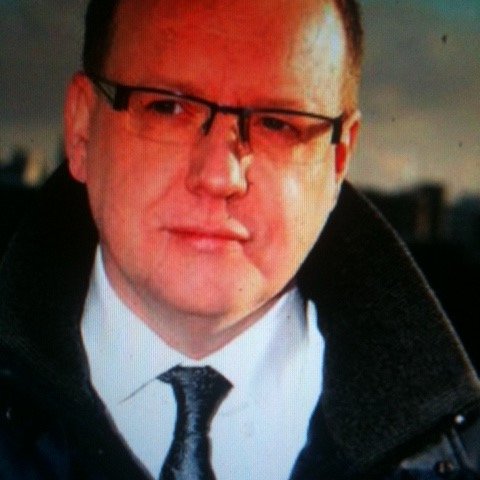
Paul John Ferris (born 10 November 1963) is a Scottish author and former organised crime figure. Ferris was an enforcer for Glasgow ‘Godfather’ Arthur Thompson in the early 1980s. Known for his ruthlessness and extreme violence, he rose to a prominent position in the city’s criminal underworld.
He served a prison sentence for weapons possession in 1984 and believed he had been betrayed by the Thompsons. In 1991 Thompson’s son, Arthur Jr, was shot dead. Ferris was charged with his murder and subsequently found not guilty after what was the longest criminal trial in Scottish history at that time. He was imprisoned again from 1998 to 2002 for trading in firearms and possessing explosives. Ferris was also involved in a long-running feud with Tam McGraw.
His first book was published in 2001 while he was in prison. Since his release he has written three more books about crime, and has been involved in the security industry.
Paul Ferris was born on 10 November 1963 in the Blackhill district of Glasgow to a Protestant father and a Catholic mother, and was raised as a Catholic. Ferris was the youngest of six children, with one older brother Billy and four sisters Carol, Cath, Janet and Maureen. Ferris was bullied for several years by members of a local criminal family, the Welshes, which is thought to have resulted in him developing the skin disorder psoriasis. He has known Glasgow gangland figure Ian McAteer since childhood.
Ferris began his life of crime as a teenager with a series of revenge knife attacks on the Welsh brothers, and was arrested aged 17 for assault and robbery and sent to Longriggend Remand Centre. He was bailed after several weeks, and while awaiting trial fled from the police after a car chase, as the car he was travelling in contained a shotgun and knives. After several weeks on the run, Ferris was captured by the police and returned to Longriggend to await trial. At his trial for the assault and robbery charges he was sentenced to three months in Glenochil Detention Centre.After his release from Glenochil he returned to court to face charges relating to the car chase, and was sentenced to a year in Glenochil Young Offenders Institution. Several weeks after the end of his sentence he was arrested while attempting to rob a jeweller’s shop and returned to Longriggend. Upon his release he continued to take his revenge on the Welsh brothers, which brought him to the attention of Glasgow underworld figure Arthur Thompson, known as “The Godfather”.
Ferris became involved with Thompson’s crime empire aged 19, when he became an enforcer, collecting debts on behalf of Thompson, and carried out stabbings, slashings, blindings and knee-cappings. A year later Ferris was arrested following an incident where shots were fired at Willie Gibson and four of his relatives while they were travelling home from a night at a pub, with Gibson’s cousin John Hogg sustaining a bullet wound to his thigh. The three relatives failed to identify Ferris at an identity parade, but Gibson picked him out as the man who fired the shots. Ferris was charged with four counts of attempted murder, and was remanded to Longriggend. At his trial several months later he was acquitted on all four counts with a not proven verdict.
Now aged 21, Ferris immediately returned to his work as an enforcer for Thompson, and was soon arrested again and charged with possession of offensive weapons after a pickaxe handle and knives were found in his car. While awaiting trial he was involved in a stabbing, and fled to Thompson’s holiday home in Rothesay on the Isle of Bute. Within a day of arriving there, he was arrested by armed police and charged with various offences including attempted murder and possession of heroin with intent to supply, and was remanded to HM Prison Barlinnie. The attempted murder charge was dropped a week later and Ferris was found not guilty of the drugs charge, but he received an 18-month sentence for possession of offensive weapons. After being released from prison Ferris stopped working for Thompson and started a company named Cottage Conservatories specialising in double glazing and conservatories, but still remained active in the criminal underworld.
On 18 August 1991 Thompson’s son, Arthur Jr (nicknamed “Fat Boy”) died after being shot outside his home. Ferris was arrested following the killing and was charged with murder and remanded to HM Prison Barlinnie. On the day of Thompson Jr’s funeral, the cortege passed a car containing the bodies of two friends of Ferris, Robert Glover and Joe “Bananas” Hanlon, who were also suspected of involvement in his death, and had been killed by gunshots to the head. At his trial in 1992 Ferris was defended by Donald Findlay, on the following charges:
Over 300 witnesses were called to give evidence at a trial which lasted fifty-four days and cost £4 million, at the time the longest and most expensive trial in Scottish legal history, and ended in Ferris being acquitted of all charges. After the trial Ferris returned to Glasgow and set up a car dealership named Jagger Autos, and also became a consultant for security firm Premier Security, which had a reported annual turnover of £6.2 million. He also maintained contacts in the underworld, including Paul Massey and Rab Carruthers in the north of England. In 1993 his brother Billy escaped from a prison escort after being allowed temporary release to visit his sick father, and was one of the six most wanted men in Britain until being captured in Blackpool. Later that year, Ferris accused the police of having a vendetta against his family after Billy was refused permission to attend the funeral of their father. In August 1994 Ferris received a £250 fine from a court in Manchester after being charged with possession of crack cocaine. He told the court “I’m no gangster”, and claimed he used the drug to alleviate his psoriasis. In 1995 Ferris appeared in a television interview with John McVicar in which he remarked “If anyone was born into crime, it was me. Crime is in my blood”, and also claimed he had “always used a weapon of sorts”.
Ferris was arrested in London in 1997 following a two-year surveillance operation by MI5 and Special Branch. At his trial at the Old Bailey in July 1998 he was sentenced to ten years imprisonment after being convicted of conspiracy to sell or transfer prohibited weapons, conspiracy to deal in firearms and possessing explosives, although the sentence was reduced to seven years at the Court of Appeal in London in May 1999. While in prison Ferris co-authored his biography The Ferris Conspiracy with Reg McKay, which sold 20,000 copies while he was imprisoned. Ferris was released from Frankland Prison, County Durham in January 2002 pledging to give up his life of crime, and released a second book with McKay, a novel titled Deadly Divisions, in April 2002. In May of the same year he was sent back to prison for breaching the conditions of his parole after being involved in a knife fight with Tam McGraw, and an alleged connection with a £900,000 shipment of cannabis (later proven to be fictionalised by newspapers and police). Official reports say he was wounded in the knife fight, but witnesses say he was free of recent wounds. As to the cannabis shipment, the other accused had not been in contact with Ferris for many years. Ferris was released again in June 2002, and returned to Scotland.
Ferris started the company Frontline Security after being released from prison. In January 2004 Frontline Security were criticised when it was reported the company were guarding the Rosepark nursing home, where 14 pensioners had died in a fire. Relatives of the victims demanded to know why a company linked to Ferris had been hired. Three months later it emerged that Frontline Security had won a contract to protect speed cameras on the M8 motorway, with a police source stating “The fact this firm have been handed this speed camera contract is just plain ridiculous”. Later the same year it emerged that the company had been paid taxpayers’ money to protect Dumbarton Sheriff Court, and court bosses said they would not use the firm again.
Ferris caused more controversy when it emerged he was being filmed for a fly-on-the-wall television show to be broadcast on Five. TV bosses were accused of glamourising his life of crime, with a Glasgow detective stating “Now we have Ferris the TV star – it makes you sick. He can try to become a Z-list celebrity all he wants, but he is a career criminal and no matter how many times he tries to reinvent himself, we will always know the truth”. In April 2005 police in Edinburgh began investigating Ferris over concerns he was attempting to invest in the taxi trade in the city, and a month later details of a planned film about Ferris’ life emerged, starring Scottish actor Robert Carlyle and Oasis singer Liam Gallagher. Ferris released his third book Vendetta in October 2005, and followed that with an appearance at the Festival of Scottish Writing in Edinburgh in May 2006.This was followed by the release of his fourth book Villains in October 2006. In January 2007 Scottish Minister for Justice Cathy Jamieson announced a planned initiative to prevent convicted criminals from profiting from the publication of their memoirs, although Reg McKay has previously stated Ferris did not profit from the sale of the first book and that his motivation was not financial.
A film based on his life, The Wee Man, starring Martin Compston as Ferris and John Hannah as Tam McGraw, was released in 2013. Another book, entitled ‘Unfinished Business’, which was written with Steve Wraith and Stu Wheatman was released in October 2018.
Courtesy for Wikipedia
David Haye took aim at Eddie Hearn, Tony Bellew and Anthony Joshua in a classic press conference before his bout with Bellew back in 2017.
In the build-up to the PPV fight, Haye took his moment to speak at the presser as an opportunity to launch a verbal attack on Hearn.
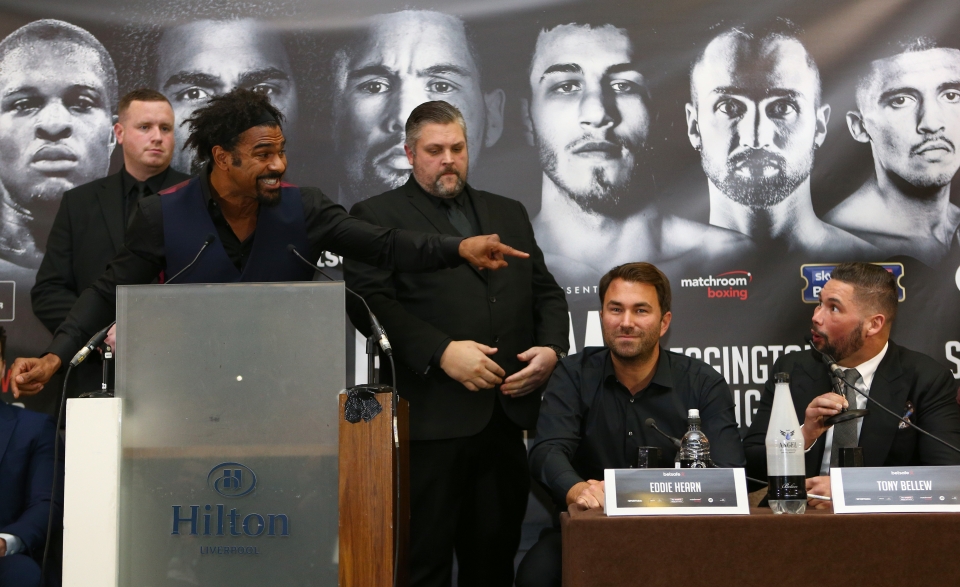
Haye began: “In the time that I’ve been out, I’ve been watching social media, watching YouTube to see what’s happening on the scene.
“And all I’ve noticed is Eddie Hearn – everything’s the Eddie Hearn show.
“And this fight gives me the opportunity to shut his big mouth.
“He shouldn’t be hosting this, Adam Smith [of Sky Sports] should be hosting this, but he wanted to get out there.
“The reason why Tony believes I’ve got a load of diva-ish demands – we’ve got a list of things I want, ring, gloves, changing room.
“When it came to negotiations, the only thing Eddie really put his foot down on was that it was called, ‘Eddie Hearn and Hayemaker Promotions presents’ [with his name first].”
At this point Hearn interjected: “It was actually the split.”
But Haye replied: “No it wasn’t the split.”
Hearn said: “Listen, I’m pleased to be giving you the payday.”
To which Haye hit back: “No, no, no, no – the only thing you put your foot down on was putting your name first.
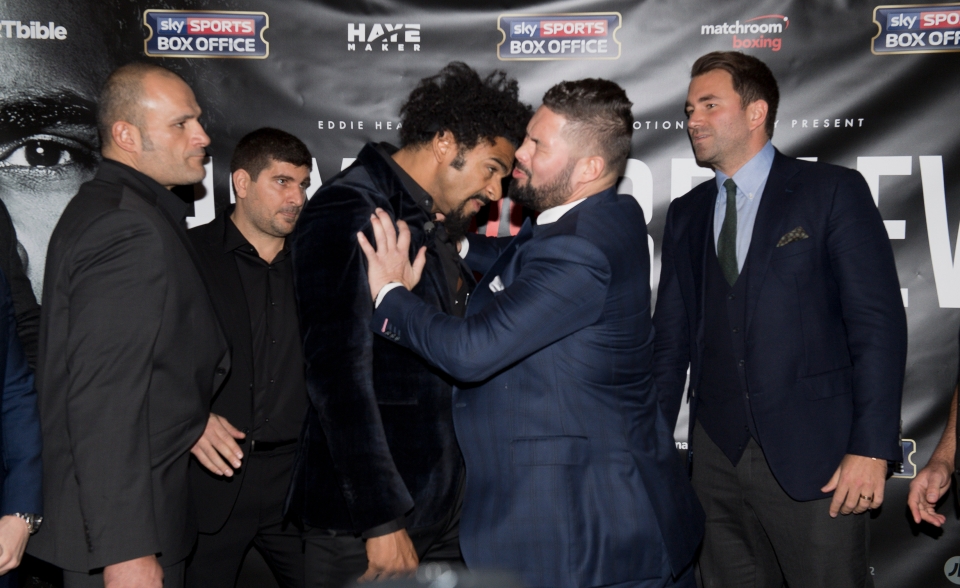
Haye and Bellew clashed when they came face-to-face
“Now, once again, you’re sticking your face out, it’s all about the Eddie Hearn show.
“I tried to watch a Katie Taylor interview the other day, really interested to see how she was, her first fight, really looking forward to it.
“She starts talking and you barge her out the way, ‘Ah, here we go, apples and pears,’ jumping around, clowning around.
“It’s not the Eddie Hearn show, you should be promoting your fighters. A boxing promoter promotes their fighters, doesn’t promote themselves.
“I’m more of a promoter in this than you are.”
Hearn interjected again: “No, you’re a joke promoter, I’ve seen your shows, they’re not fights.”
 Haye and Bellew had to be separated by security after a punch was thrown
Haye and Bellew had to be separated by security after a punch was thrown
But Haye shouted him down: “Who’s talking now? Who’s talking now?
“I’m talking to the press and you’re making it the Eddie Hearn show.”
Hearn replied: “You’re the only person that likes the sound of their own voice more than me.”
After a minute’s further bickering, Haye told Hearn: “I’d probably be working with Matchroom if your old man [Barry Hearn] was running the show.”
But Hearn hit back: “But you know what? You are working with Matchroom because you’ve got no choice because you need the dough.”
Haye said: “After I’ve taken out this guy, I’m gonna come back and take out Anthony Joshua and end your business.
“Matchroom’s gonna be over, trust me.”
After the press conference concluded, the fighters then squared up for a face-to-face.
Haye pushed his head into Bellew, prompting Bellew to shove him backwards.
As he did so, Haye threw a left hook and caught Bellew in the face.
In the fight though, Bellew pulled off a massive upset as he KOd Haye who suffered an Achilles injury midway through.
In their rematch a year later, it was a repeat result which brought about Haye’s retirement.
Content retrieved from: https://talksport.com/sport/boxing/1029550/david-haye-eddie-hearn-tony-bellew-anthony-joshua/.
You cannot copy content of this page